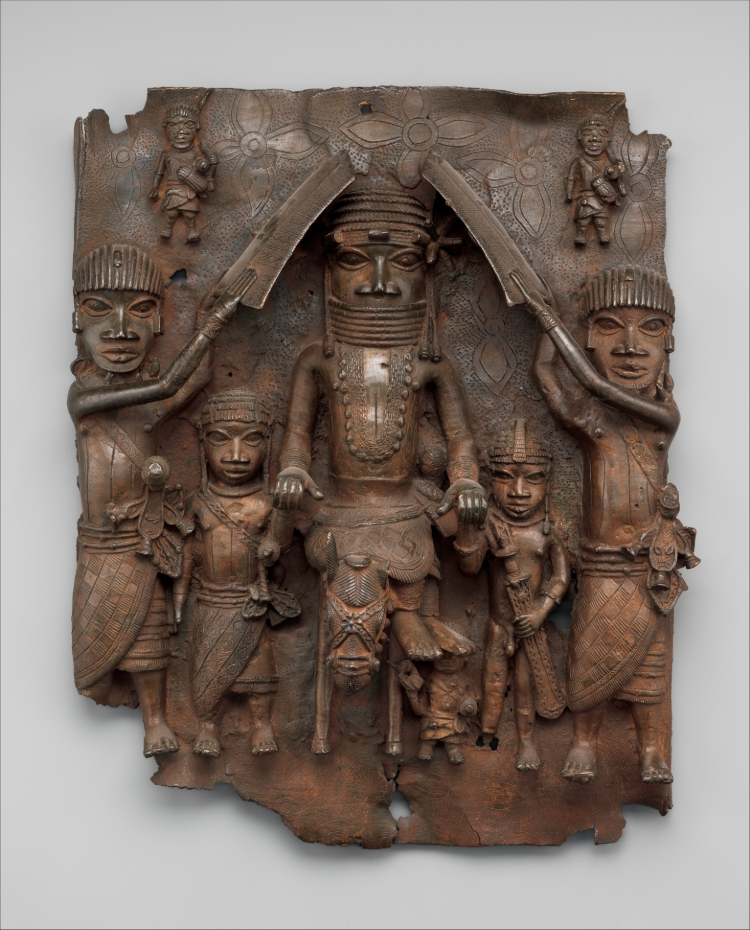Plaque with Equestrian Oba and Attendants

Plaque with Equestrian Oba and Attendants
Part of a series of around 900 plaques originating from the Kingdom of Benin (a kingdom that's now part of Nigeria, not the nearby country of Benin) in the 16th century. The plaques were hung on pillars in the great audience hall of the palace in Benin City.
As is common with many indigenous art pieces, the history is predictably fraught. During a trade dispute with Britain in the late 1890s, the British launched the Punitive Expedition of 1897 (no need to sugar coat your imperial intent in the 19th century), burned Benin City to the ground, and looted the collection of plaques, which were later distributed to museums throughout Europe and the Americas.
To add insult to injury, the plaques were considered too advanced to have been constructed by the kingdom's population and were assumed to have been crafted by Portuguese traders, despite the long history of a bronze guild within the kingdom pre-dating the arrival of European traders.
All that glitters is not gold
Sometimes it's highly polished bronze. This plaque was polished to a shine when it was installed on the pillars in the audience hall. Bronze was used as currency in Benin, so this plaque is a tribute to the wealth of the king who commissioned the work (Oba means king in Edo).
Here, the size of the figure indicates its importance in the artwork. The coral necklace on the large center figure in the casting indicates this is an image of an Oba, as does the fact that he's sitting on a horse. The attendants to the side are shielding him from the sun or providing protection.
Though there are other figures, the symmetrical composition of the Oba and his two attendants, forming a trinity of figures, is common in Benin plaques.
What a relief!
The plaque was constructed using a method known as lost wax casting, which is a very time-consuming and difficult process:
- The form is created using wax.
- The wax is covered in clay and fired, evacuating the melted wax in the process.
- Molten bronze is poured into the clay cavity and allowed to cool.
- The clay is broken away, and the bronze is cleaned and polished.
This is an example of a high relief sculpture, meaning some of the forms project far from the base, and are often free-standing, making the process even more difficult.
The Kingdom of Benin had perfected the process over centuries and had a bronze guild that continues to this day in Benin City.
